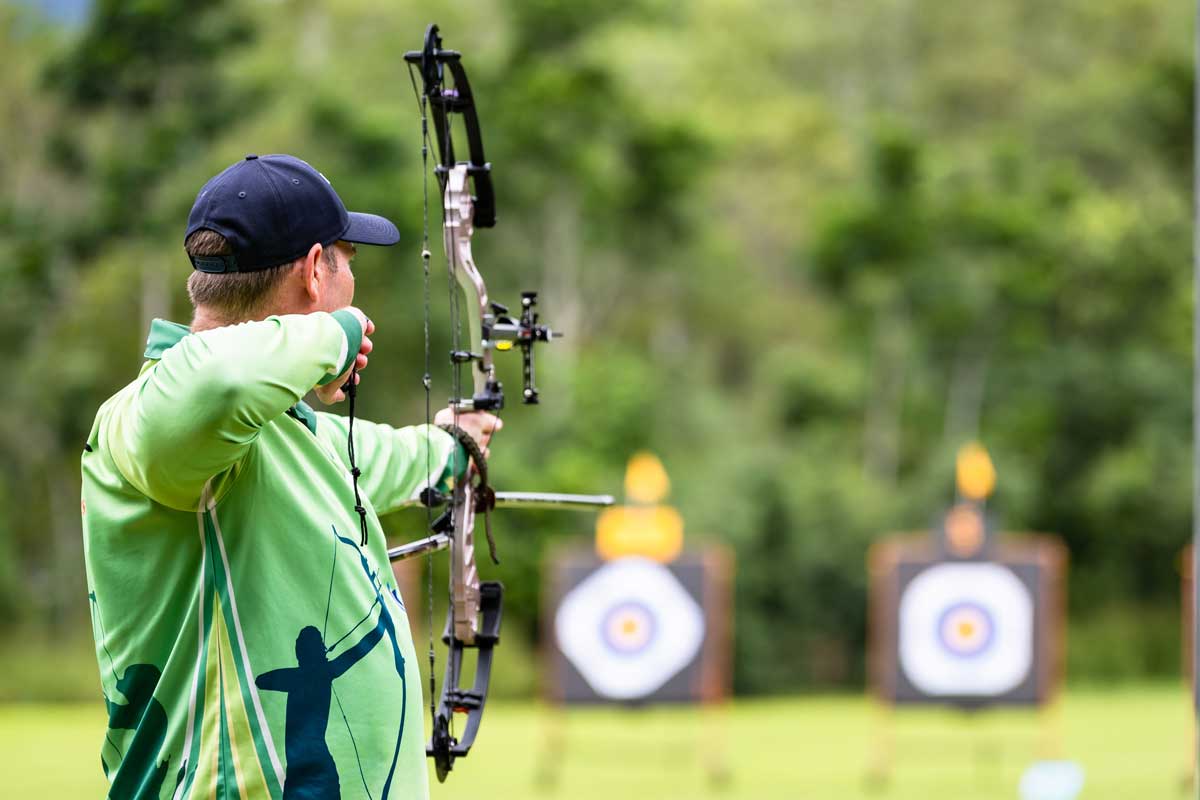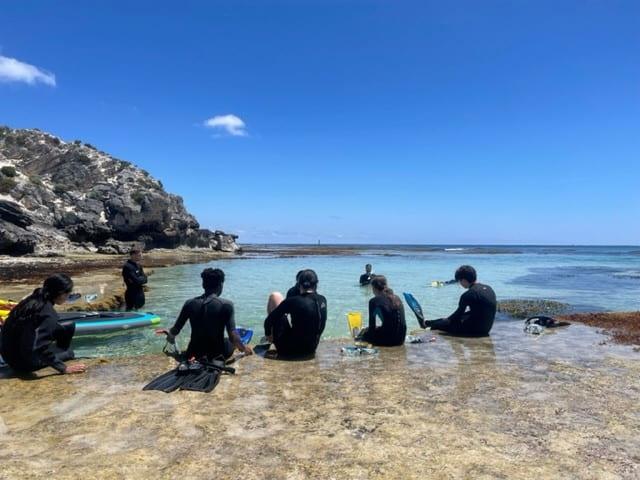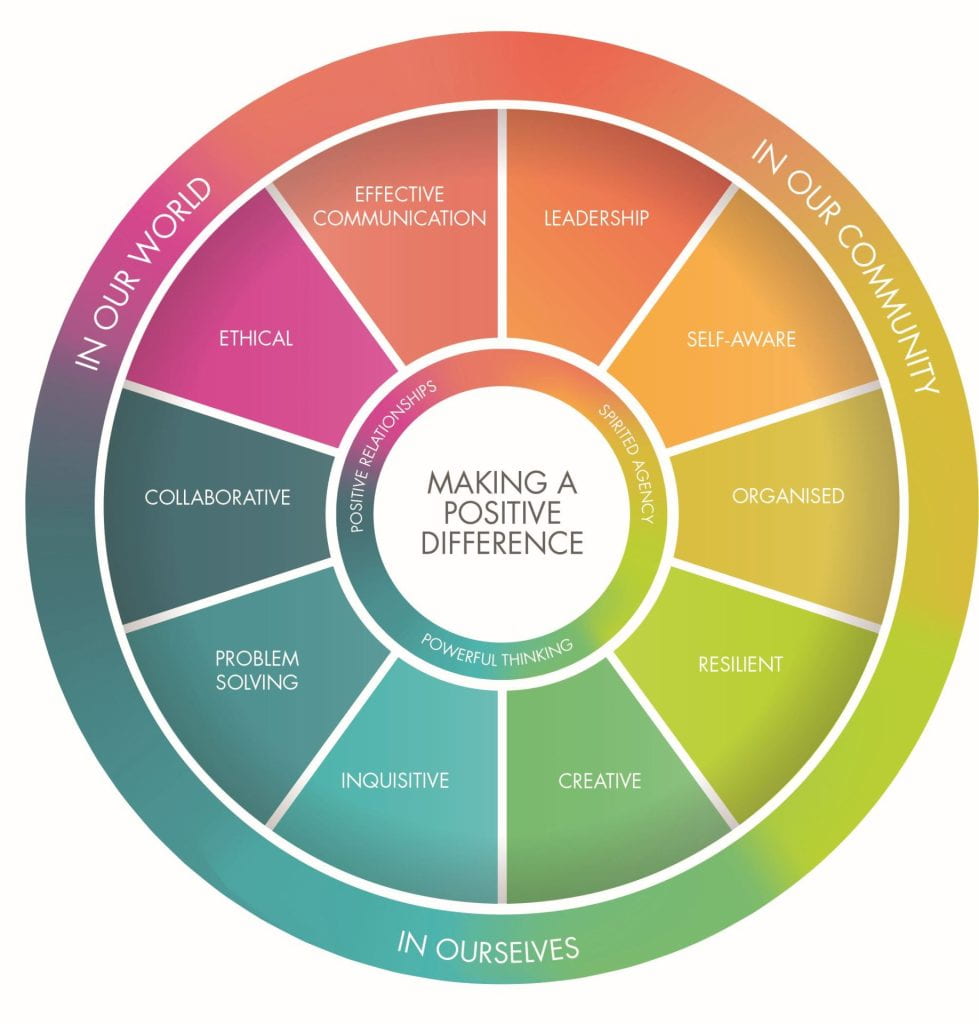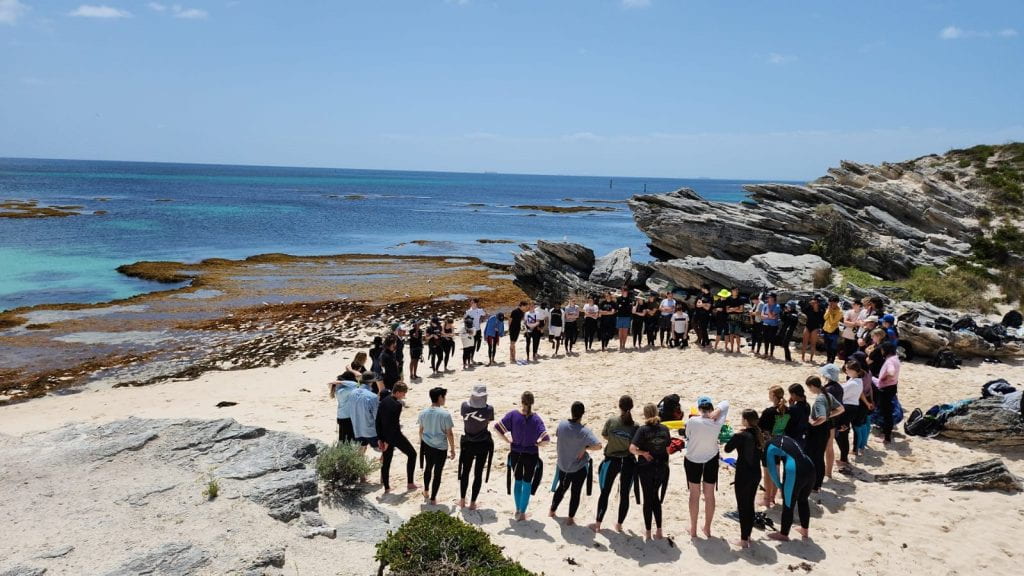
MUIR is an elective where we have been allowed to do 3 main sports, these are orienteering, archery and snorkelling. Overall, I found MUIR very fun, calming, and an interesting elective. One of my favourite activities inside MUIR was archery, as it was the most fun and chill thing we did in MUIR. Another highlight would be the Rottnest camp because it was one of the most chill and fun camps I’ve ever had. For anyone who wants a chill and fun elective, MUIR is the elective for you.
Orienteering-

One of the sports you’ll be experiencing in MUIR is orienteering. Orienteering is a sport in which orienteers use an accurate detailed map and a compass to find points in the landscape, which can be enjoyed as a walk in the woods or as a competitive sport. At the start of this elective, we had been learning about the skills needed in orienteering. Some skills were, how to use a compass, take compass bearings, orient, understand, and use a map and pacing. As we learnt more about orienteering (aka the basics), we were allowed to go do orienteering courses around the school. The orienteering courses around the school were extremely fun and chill, as we were able to choose who to orienteer with and we mainly just chatted while orienteering.
Later throughout term 3, we had gone to different orienteering courses outside of school. Some of these courses were at Piney Lakes, Manning, and Jorgensen. Piney lakes and Manning were both very fun and calm experiences. At the end of the term, on the final day of school, all MUIR classes had gone on an excursion to Jorgensen Park. Overall, I thought Jorgensen Park was a fun and chill experience. My group had done well but had gotten distracted for some time and we had only gotten to finish the easy and medium courses.
Archery-
By far, one of the most fun and chill activities in MUIR for me was archery. Archery is a sport that can be played for fun or competitively, where a person shoots an arrow using a bow onto a target trying to hit the middle of the target with precision and accuracy. I liked archery the most, as we had gotten a whole period dedicated to shooting arrows at a target, chilling with friends and talking with them. Our Archery teacher, Mary taught us many skills such as how to load an arrow onto the bow, how to shoot properly with the correct stance, and anchor points and how to aim. In archery, Mary taught us the many skills that are needed in archery. After we learnt the basics, we had gotten many periods dedicated to shooting targets. In the end, we had done a sky shoot, where we shoot into the sky to a target on the floor.

One of the challenges I faced during Archery was aiming. When you aim, you should always use a point on your bow or arrow to aim and when you shoot your first shot, you should use that as a guide for your next shots. If your first arrow shoots over the target, aim lower and if it shoots too low, aim the bow a little bit higher. I solved this challenge as I changed my aiming point from the tip of the arrow to a point on the bow. This helped me a lot and I gradually improved my aim throughout the archery classes.
Snorkelling-

Snorkelling was the activity that had gotten me out of my comfort zone the most, but it was still very fun and interesting. Snorkelling is an activity or sport in which a person swims using a mask, snorkel and swimming aids like fins. In snorkelling, you get to have the opportunity to go to different beaches and snorkel to see many different species of marine life and coral. We had started learning the snorkelling swimming style in the pool, which was having our hands by our sides, and kicking while wearing our snorkel masks. We had learnt hand signs in snorkelling which was needed to communicate with others while in the water. After we learnt these skills, we had gone to Coogee to snorkel around the shipwreck. The snorkelling around Coogee was interesting as we got to see many different species of fish, although I was unable to identify any.
Capabilities

Self-awareness is another capability I’ve used. Self-awareness is the ability to focus on yourself and how your actions, thoughts or emotions do or don’t align with your standards, and how they affect others. An example of this is when I and my group was orienteering in Jorgensen Park, and we had to stay self-aware and not step on any plants. We had done this, to not kill any flora and to abide by the acronym “LNT” (Leave no trace). In the Rottnest camp, we had to be self-aware to not litter and damage any flora or wildlife. An example of this was when I was eating. If I had accidentally dropped food and left it there, the native Quokkas would’ve eaten the food. This may sound good as their being fed, but normally the food we give them is not a part of their normal diet, which could result in them getting sick.
A capability I’ve used in MUIR is organisation. The organisation is the ability to arrange, sort, plan and systematize things or events in a certain manner that’ll positively affect you or something. An example of this was when I was packing for camp. I needed to stay organised to make sure I had everything I needed, and I rechecked the list multiple times to make sure I did not miss anything. I had also packed a few days before camp, so if I didn’t have something I needed, I could buy it without worry. During the camp, we had to stay organised to make the most of it and have fun. Some examples of this were when we had to pack our day bags in the morning on Tuesday for the whole day, as we wouldn’t see our main luggage bags until we catch the ferry back to land.

Effective communication is a capability needed for snorkelling and orienteering, as there is a sense of needed teamwork in both sports. Effective communication is the process of exchanging ideas, thoughts, opinions, knowledge, and data so the message is received and understood with clarity and purpose. In snorkelling, we applied Effective communication skills, by using snorkelling signals that we’ve learnt during snorkelling practice. I and my partner had used some snorkelling signs while we were at Rottnest, such as the “are you ok?” sign. Snorkelling signs are needed, so snorkelling partners or anyone in the water can effectively communicate with each other in a fast way, without taking the mouthpiece of the snorkelling mask out.

Effective communication was needed for orienteering as well. This is because the whole group has different tasks such as a pacer, who keeps track of how far the group has been walking, 2 bearing takers who take bearings and check with each other, and people who hold the map and make sure the group is going the right way. All these jobs in an orienteering group need to work together and communicate effectively to orienteer effectively. In my group, we had somewhat communicated effectively, but not all the time. Some of the times, my group would be all quiet, just taking a bearing and having no pacer. If I have another opportunity like this, I would’ve made sure every member of the group had a job, such as pacing, bearing taking, or map holding, and would’ve tried to communicate with the rest of the group more.
The LNT Principal
Throughout MUIR, we have been reminded constantly, of LNT, which is an acronym for “Leave no trace”. Leave no trace means that we should enter and leave any wild habitat or place in the state that it was found in. This means if we go outside into the bush for excursions, we should not damage any natural plants or flora, harm any animals, or leave any trash that could harm the environment around us. An example of my class applying this concept is when we were at Jorgensen Park. I and my group had to be self-aware of the plants and flora, so we didn’t damage any flora and tried our best to stick to the paths. At the end of the day, the whole MUIR classes had done a big Emu bob over the area where we ate and chilled at. An emu bob is when we all stand next together and walk forwards to pick up any rubbish if there is any on the floor, to make sure no rubbish was left behind. On the last day of Rottnest camp, all MUIR classes had done an Emu Bob over the campsite we had used, to pick up any rubbish that was on the ground applying LNT again.
Goals in MUIR
As I was scrolling through the elective choices in year 8, MUIR stood out to me rather than any other sports elective. This was mainly because of the experiences my sister told me about at MUIR. As well as this, I just wanted a chill and fun sports elective, and MUIR was the perfect elective for this.
One of my goals from the start, before I had even walked into the classroom, was to have fun, join in and do the fun sports I enjoy. As I walked into the classroom, I realised a fatal problem, which was that I had no friends in the classroom or anyone that I’d known for a long time. This eventually became another small goal for me, which was trying to get to know people in my class better and make new friends. Even though I was quiet in class, I’d gotten to know some people better and made new friendships, thus achieving one of my small goals of mine at the start of semester 2. By making new friendships in the classroom, I was able to achieve my other goal, which was having fun, laughing, and enjoying myself in MUIR.

Rottnest Camp

Rottnest camp was one of the biggest opportunities we were given in MUIR. In previous years, this Rottnest camp was a one-day trip at Rottnest, but this year it had turned into a one-night camp. During this camp, we had done activities such as snorkelling, an amazing race and free time. Overall, this camp was very fun and relaxing. One of the best parts of this camp was the snorkelling and free time, but all activities were fun and very chill. Snorkelling was very fun as we had gotten to see various marine life and we had also been allowed to do a swim through.